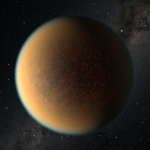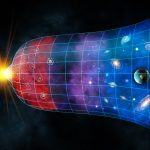Key Takeaways:
- Radiation-Eating Fungus: A recent experiment aboard the International Space Station reveals the potential use of Cladosporium sphaerospermum, a fungus thriving in high-radiation zones like the Chernobyl Nuclear Power Plant, as a natural defense against cosmic radiation.
- Radiosynthesis Process: C. sphaerospermum utilizes melanin, the pigment found in human skin, hair, and eyes, to convert X- and gamma rays into chemical energy through a process called radiosynthesis, offering a unique mechanism for shielding against radiation.
- Self-Replicating Shield: The fungus is self-replicating, suggesting the possibility of astronauts cultivating their radiation shielding during deep-space missions, reducing reliance on complex and costly interplanetary supply chains.
- Survival in Space: While uncertainties surrounded the survival of C. sphaerospermum in space, experiments on the ISS demonstrated its radio-resistance. The fungus reduced radiation levels by about 2%, paving the way for potential applications in space exploration.
- Potential for Mars Missions: Extrapolating results, researchers estimate that an approximately 8-inch layer of C. sphaerospermum could significantly mitigate the annual radiation dose on the surface of Mars, offering crucial protection for astronauts on extended missions.
Space exploration poses numerous challenges, with cosmic radiation ranking high among them. As scientists seek innovative solutions, a groundbreaking experiment aboard the International Space Station has unveiled the potential of a radiation-eating fungus, Cladosporium sphaerospermum, as a natural defense against the harmful effects of cosmic radiation during space travel.
C. sphaerospermum, an extremophile species thriving in radiation-rich environments such as the Chernobyl Nuclear Power Plant, possesses a remarkable ability to convert gamma radiation into chemical energy through a process known as radiosynthesis. This process, akin to photosynthesis but fueled by radiation instead of sunlight, is facilitated by melanin—the same pigment responsible for the coloration of human skin, hair, and eyes.
While scientists do not fully comprehend the intricacies of radiosynthesis, it is believed that the abundant melanin in the fungus’s cell walls enables electron transfer, resulting in a net energy gain. This unique mechanism provides a potential solution for shielding astronauts from cosmic radiation during space missions.
One of the most promising aspects of C. sphaerospermum is its self-replicating nature. Astronauts could cultivate new radiation shielding during deep-space missions, eliminating the need for a cumbersome and expensive interplanetary supply chain. This adaptability underscores the fungus’s potential as a sustainable and efficient solution for radiation protection in space.

Before considering its application in space, researchers needed to ascertain whether C. sphaerospermum could survive in the space environment. Radiation in space, especially on Mars, involves highly energetic particles, making it more destructive than terrestrial gamma and X-rays. However, experiments involving petri dishes with a .06-inch layer of the fungus exposed to cosmic radiation aboard the ISS demonstrated its radio-resistance.
The results indicated that the fungus reduced radiation levels by approximately 2%, prompting researchers to estimate that an 8-inch layer of C. sphaerospermum could significantly mitigate the annual radiation dose on the surface of Mars. This finding holds substantial implications for the well-being of astronauts on extended missions, as exposure to cosmic radiation poses health risks and challenges the feasibility of long-term space exploration.
While these findings are promising, researchers emphasize the need for further investigation. It is likely that C. sphaerospermum would complement other radiation-shielding technologies aboard spacecraft rather than serving as the sole protective measure. Nevertheless, the study underscores the potential of simple biotechnologies derived from nature to offer groundbreaking solutions for the challenges faced in space exploration.
In conclusion, the discovery of Cladosporium sphaerospermum’s radiation-eating properties opens new avenues for developing efficient and sustainable radiation shielding in space travel. As humanity gears up for future missions to the Moon, Mars, and beyond, harnessing the power of nature, as exemplified by this remarkable fungus, may prove indispensable in ensuring the safety and success of space exploration endeavors.


